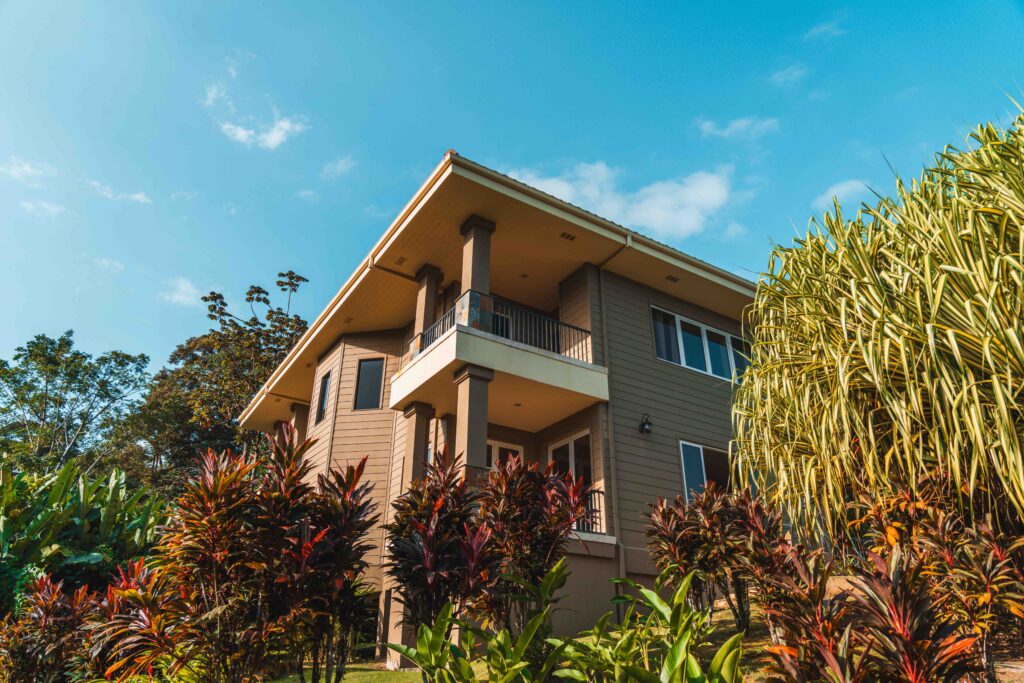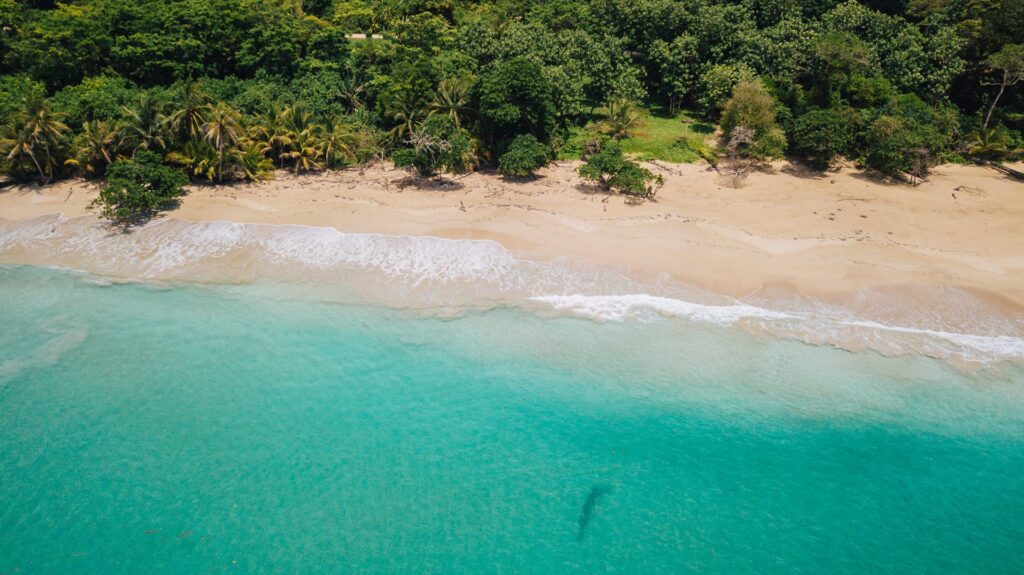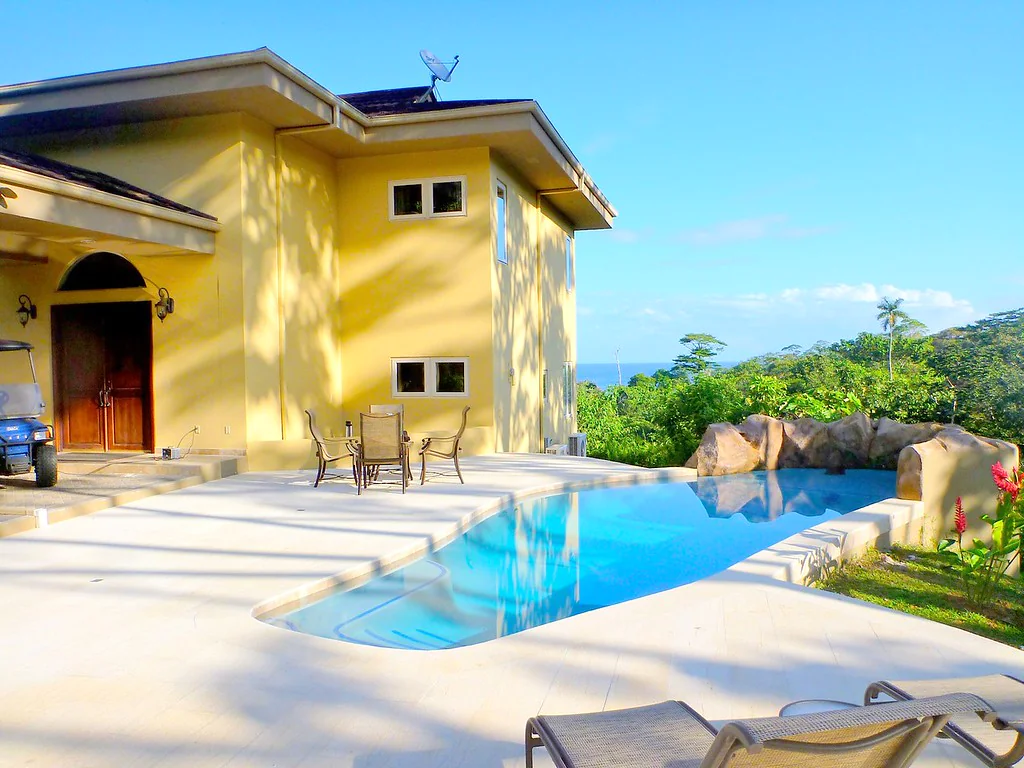Homes For Sale In Caribbean Real Estate
Average Home Prices
Average Home Statistics
In Terms ofAverage Home Prices
Per Square FeetTable of Contents
- Caribbean real estate: What you should know
- CARIBBEAN REAL ESTATE AT A GLANCE
- COMMON PROPERTY TYPES IN THE CARIBBEAN
- Waterfront properties
- Condos and apartments
- Traditional single-family homes
- Historic plantation houses
- Luxury condos
- COMMON ARCHITECTURAL STYLES
- Colonial architecture
- Caribbean vernacular
- Modern and contemporary
- UNDERSTANDING FOREIGN OWNERSHIP OF REAL ESTATE IN THE CARIBBEAN
- LIVING IN THE CARIBBEAN: AN OVERVIEW
- Easy access to top beaches and resorts
- Shop at illustrious shopping destinations
- Experience the best in dining
- Immerse yourself in art and culture
- Experience colorful festivals
- Explore historical attractions and landmarks
- Gain access to near-limitless outdoor recreational activities
- LIVING IN THE CARIBBEAN AS A FOREIGN NATIONAL
- GET A SLICE OF PARADISE IN THE CARIBBEAN

Caribbean real estate: What you should know
The Caribbean is a stunning archipelago of over 700 islands, islets, and cays that embody the very essence of sun, sea, and sand.
Sorted into three main island groups, namely The Bahamas, the Greater Antilles, and the Lesser Antilles, the Caribbean enjoys an enviable tropical climate all year round. Given its nature as an archipelago, this region has an area of approximately 2.75 million square kilometers.
You’ll find a vastly diverse population in the Caribbean region, a large chunk of which is composed of Afro-Caribbean people, followed by those of European, Asian, indigenous, and Middle Eastern descent. In addition to its native-born population, the Caribbean has also attracted a significant number of immigrants and foreign residents, many of whom were drawn to the region’s lush landscapes, pristine beaches, and a slower, more laid-back pace of life.
The Caribbean is described as Paradise on Earth and it's not hard to see why. First, the region is surrounded by crystal-clear waters teeming with vibrant coral reefs, exotic marine life, and underwater caves, making it the perfect place for divers and underwater explorers. Aside from its wonderful oceans, the region also boasts lush rainforests, mountain ranges, and beaches, making it the destination of choice for many hikers and nature enthusiasts.
In addition to its natural wonders, the Caribbean is also celebrated for its rich cultural heritage. For instance, music and dance are integral parts of life here, with the rhythmic sounds of Calypso, dancehall, soca, and reggae songs filling the air, especially during festivals and celebrations. The culinary scene in the region is just as diverse, with each island offering its own selection of delectable dishes influenced by African, European, and indigenous flavors.
In recent years, sustainable tourism initiatives have taken root in the Caribbean, with many programs being introduced to protect its fragile ecosystems while, at the same time, offering the same level of unmatched hospitality to its many visitors.
CARIBBEAN REAL ESTATE AT A GLANCE
The Caribbean real estate market offers a wide range of options for interested buyers and investors, from luxurious beachfront villas and private estates to charming island cottages and bustling urban condos.
Located southeast of the Gulf of Mexico and the United States, the region's allure lies in its stunning natural beauty, which is why it’s a much sought-after area for vacation homes, resorts, and retirement destinations. Investors are also eyeing the Caribbean as a lucrative opportunity, with tax benefits and a growing tourism industry making it ripe for real estate development. Some countries in the region are also offering citizenship or residency programs through property investments, enticing high-net-worth individuals.
Do note, however, that the Caribbean real estate market can be influenced by a number of factors, including inclement weather, political instability, and less-than-ideal economic conditions. Each island nation also has its own property regulations and tax implications – that’s why it’s essential to conduct thorough research, whether you plan to invest in real estate properties in the archipelago or make this Paradise on Earth your new home.
COMMON PROPERTY TYPES IN THE CARIBBEAN
The Caribbean real estate market offers a gold mine of options for those interested in living or investing here. From vibrant beachfront villas to charming colonial estates, here are some of the most common property types you’ll encounter on the market:
Waterfront properties
Often dubbed the crown jewels of Caribbean real estate, waterfront properties such as beachfront villas offer stunning ocean views, direct access to pristine beaches, and a deluxe array of community amenities. Given the archipelagic nature of the Caribbean, there’s a lot of shoreline to build a house on. Thus, prime waterfront properties can be found virtually everywhere here, especially on major islands such as St. Barth's, Barbados, the Bahamas, and Grand Cayman, to name just a few.
Condos and apartments
Found in the Caribbean's bustling cities and tourist hotspots, condos and apartments are a popular choice for those who want to live right where the action is. These properties provide a convenient – and oftentimes, more affordable – option for both residents and vacationers. They are known to provide great value for their price as they often come with shared amenities such as pools, gyms, and security.
Traditional single-family homes
Available as two-story structures and bungalows, traditional single-family homes are good options for those who want to purchase a vacation home or rental property. These homes, which are often found in the more secluded and rural parts of the Caribbean, typically come with colorful facades, louvered windows, and tropical gardens, as well as easy access to beaches and green spaces.
Historic plantation houses
Restored historic plantation houses are another viable option for investing in Caribbean real estate. Dating back to the region's colonial days, these historic houses have been meticulously restored to their former glory, making them perfect for those who want to live in a property with a lot of character and old-world charm. Known to fetch prices of at least six figures, these majestic estates showcase the region's rich and colorful heritage and often come with spacious rooms and interiors, modern kitchens and bathrooms, sprawling gardens, and expansive outdoor living spaces.
Luxury condos
The Caribbean islands have long been known as the playground of the rich and famous. Some of these high-profile personalities, ranging from Middle Eastern royalty to Hollywood’s finest entertainers, have purchased a unit or two of these high-end condos either for their personal use when they’re in town or for renting out to people who can flex their own financial muscles. These properties typically feature spacious living areas with floor-to-ceiling windows that frame breathtaking ocean views. Gourmet kitchens with top-of-the-line appliances cater to culinary enthusiasts while ensuite bathrooms are adorned with opulent marble finishes that give the feel of a high-end spa.
Aside from their fantastic features, these Caribbean real estate options also have splendid service, including 24/7 security, white-glove concierge service, and regular housekeeping. Prices for these Caribbean gems vary but usually start with a price not lower than $1 million.
COMMON ARCHITECTURAL STYLES
A true melting pot, the Caribbean is renowned for its vibrant culture, rich history, and diverse influences – a fact reflected in the variety of architectural styles you can find all throughout the region. Here are some of them:
Colonial architecture
One of the most popular and common architectural styles in the region, Colonial architecture bears the mark of European powers that took control over the island nations, including the Spanish, British, Dutch, and French. Homes built in this style are distinguished by their features, such as charming pastel-colored facades, red tile roofs, intricate ironwork, white painted wood, large balconies, stucco cladding, and detailed woodworking.
Caribbean vernacular
First developed in the Caribbean during the colonial period, Caribbean Vernacular architecture blended African and European influences with indigenous traditions and aesthetics, resulting in a truly distinctive style. Homes built in this particular style typically display features that address a specific need and purpose such as jalousies that allow the sea breeze to come in and keep the interior cool; gabled roofs that provide the most efficient rain and water runoff; and light, pastel-colored facades to help reflect excess light and heat from the afternoon sun.
Modern and contemporary
Developed in the early 20th century, modern and contemporary architecture are known for their emphasis on function over form – as compared to classical styles that focus on more ornate details. In the Caribbean, modern and contemporary designs often make use of eco-friendly features and sustainably sourced materials alongside modern techniques, resulting in homes that are not only aesthetically pleasing but remarkably sturdy even in the humid tropical environment.
UNDERSTANDING FOREIGN OWNERSHIP OF REAL ESTATE IN THE CARIBBEAN
Foreigners, in general, are allowed to buy real estate properties in most parts of the Caribbean. However, some countries have recently put in place more stringent policies with regard to the sale and ownership of land to foreign buyers due to the following:
To protect ecosystems. Given the fragile standing of the Caribbean region’s natural environment, they are concerned that a foreigner won’t be as invested in preserving that environment compared to a local.
To keep property values affordable to locals. Some foreign investors may purchase properties then sell these for a profit, essentially making prices soar too high that locals can no longer afford to buy their own land.
To preserve their culture. There’s the risk that foreign investors might develop the land without factoring in the local culture.
For national security. More foreigners owning land than locals may result in the former gaining more political clout and intervening in local affairs.
Some countries in the region require foreign buyers to first get government approval before they can purchase Caribbean real estate. One of them is the British Virgin Islands, which requires non-nationals to first obtain a Non-Belonger Land Holding License before they can buy properties within its borders. This is also true for Trinidad and Tobago and the Cayman Islands, which mandate foreign buyers to first apply for a license to buy their desired properties.
Other Caribbean nations, for their part, restrict the amount of land that a foreign national can own, including:
Dominica – Allowed up to one acre of land.
The Bahamas – Allowed up to two acres of land.
St. Kitts and Nevis - Allowed up to five acres of land.
Barbados – Allowed up to five acres of land.
Grenada – Allowed up to ten acres of land.
Given the extent of these requirements, it pays to make some calls to an expert on Caribbean real estate and conduct due diligence to ensure that you have an informed and well-prepared strategy for moving to or investing in the area.
LIVING IN THE CARIBBEAN: AN OVERVIEW
Living in the Caribbean can be best described as living in your own slice of paradise with the remarkable natural setting, the beautiful culture, and the overall high quality of life.
Here are some of the things you can expect once you move to the Caribbean:
Easy access to top beaches and resorts
Investing in Caribbean real estate is synonymous with having easy access to some of the best beaches and resorts in the region. Some of these world-class beaches include Pigeon Point Beach in Tobago, Bávaro Beach in the Dominican Republic, and The Baths in the British Virgin Islands, all of which are renowned for their crystal-clear waters, powder-soft sand, and fresh, clean air.
Shop at illustrious shopping destinations
Aside from its selection of pristine beaches, the Caribbean is also home to several major shopping destinations. These include the island of St. Barths, which has well over 200 luxury and designer stores; St. Thomas and St. Croix, which are known for their duty-free shops; Nassau in the Bahamas, which is brimming with collectibles and handicrafts; and Grenada, which has everything from luxury goods to locally made textiles.
Experience the best in dining
Over the last few decades, several top-rated restaurants have opened in the Caribbean, providing extraordinary gastronomic pleasures and a variety of flavors. These include Le Pressoir in St. Martin, which serves excellent French-Caribbean fare; Fish by Jose Andres in The Bahamas, which is known for its exceptional take on seafood; and Orlando's in St. Lucia, which takes great pride in its Caribbean-focused menu.
Immerse yourself in art and culture
Given its rich history and diversity, it's not surprising that the Caribbean has an active and vibrant art scene. For an intimate and in-depth look at both modern and classic art from the region, as well as items and artifacts from its past, a visit to museums such as Haiti's Musée de Panthéon National, Jamaica's National Gallery of Art, the National Art Gallery of The Bahamas, and the Dominican Republic's Museo de la Resistencia Dominicana – to name a few – is in order.
Experience colorful festivals
Party animals, rejoice: the Caribbean has a packed event calendar with countless colorful events and festivals that one can attend throughout the year. These include traditional events like Trinidad and Tobago’s Carnival, one of the oldest in the region; Crop Over in Barbados, which marks the traditional end of the sugarcane harvest season; and the Bahamian Junkanoo, which is held in the early hours of Boxing Day and New Year’s Day. It also includes more modern celebrations, such as the Saint Kitts Music Festival, Jamaica’s Reggae Sumfest, St. Martin’s SXM Festival, the Cayman Islands’ Pirate’s Week, and Aruba’s Soul Music Beach Festival.
Explore historical attractions and landmarks
The Caribbean has no shortage of historical attractions and landmarks, making it the perfect place for those with a penchant for history and exploration. Some of the must-visit sites in the region include Bridgetown in Barbados, the port town of Willemstad in Curacao, the colonial city of Santo Domingo in the Dominican Republic, and Nelson’s Dockyard in Antigua, among others.
Gain access to near-limitless outdoor recreational activities
Given the number of beaches and parks in the region, as well as other outdoor recreational spaces, residents and visitors are spoilt for choice when it comes to activities they can enjoy in the Caribbean. These include activities such as swimming, snorkeling, kitesurfing, and sailing, as well as more land-based excursions like hiking, canyoning, and caving.
LIVING IN THE CARIBBEAN AS A FOREIGN NATIONAL
The Caribbean is a dream destination for expats but there are certain things an expat has to know before taking the first plane out to this Atlantic paradise.
First, visa requirements in the Caribbean differ from island to island. To avoid immigration issues, research the visa requirements for your desired country in advance and make sure your paperwork is in order.
The same can be said for the cost of living in the Caribbean, with some islands being significantly less expensive than others. For instance, countries like Grenada, Belize, Panama, Dominica, and Honduras have a lower cost of living compared to the US, Canada, and Europe, whereas Barbados, the Cayman Islands, and the Turks and Caicos are among the most expensive Caribbean nations to live in.
When it comes to languages, expats from English-speaking countries have an advantage as English is widely spoken throughout the Caribbean, followed by Spanish, French, Dutch, and Creole. Depending on where you are in the region, try to learn a few basic phrases in the local language as building relationships with the residents and navigating daily life will be much easier.
Also, know that some island nations may have more transportation options than others. While buses, taxis, and ferries are common sights throughout the region, in some cases, you may have to buy your own vehicle to help you in going around the island.
At present, expats are free to find local work in the Caribbean, provided that they have the necessary work permits to legally work in the region. Requirements for these permits vary from country to country but they generally include a valid copy of their job offer, proof of qualifications, a valid passport, medical certificates, and proof of their financial stability.
For those bringing their families with them, it is recommended that they research schools in their chosen destination. Some Caribbean islands, such as Barbados, Antigua, and Trinidad and Tobago have international schools that offer curricula in English, while others may be limited to local schools.
Healthcare access varies across the Caribbean. Larger islands, such as Barbados, frequently have modern medical facilities, whereas smaller islands may have limited healthcare services. Expats, as of this writing, frequently choose private health insurance to ensure comprehensive coverage.
GET A SLICE OF PARADISE IN THE CARIBBEAN
Our team at Red Frog Beach Resort can help you find your very own Caribbean home, whether you're a seasoned investor, a senior adult who wants to live life at its fullest, or an adventurer willing to try something new.
On top of being your guide throughout your home-buying journey, we can also assist you in a variety of tasks from the nuances of preparing visa applications and working permits to getting you settled.
Ready to get started? Please contact us at 281.892.1344 (US) or 507.6951.6518 (Panama). You can also send us an email here.












